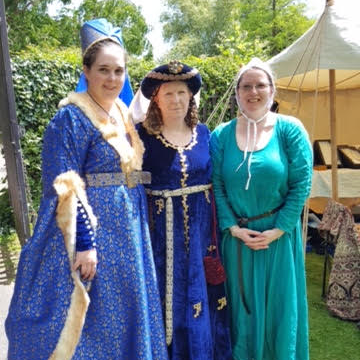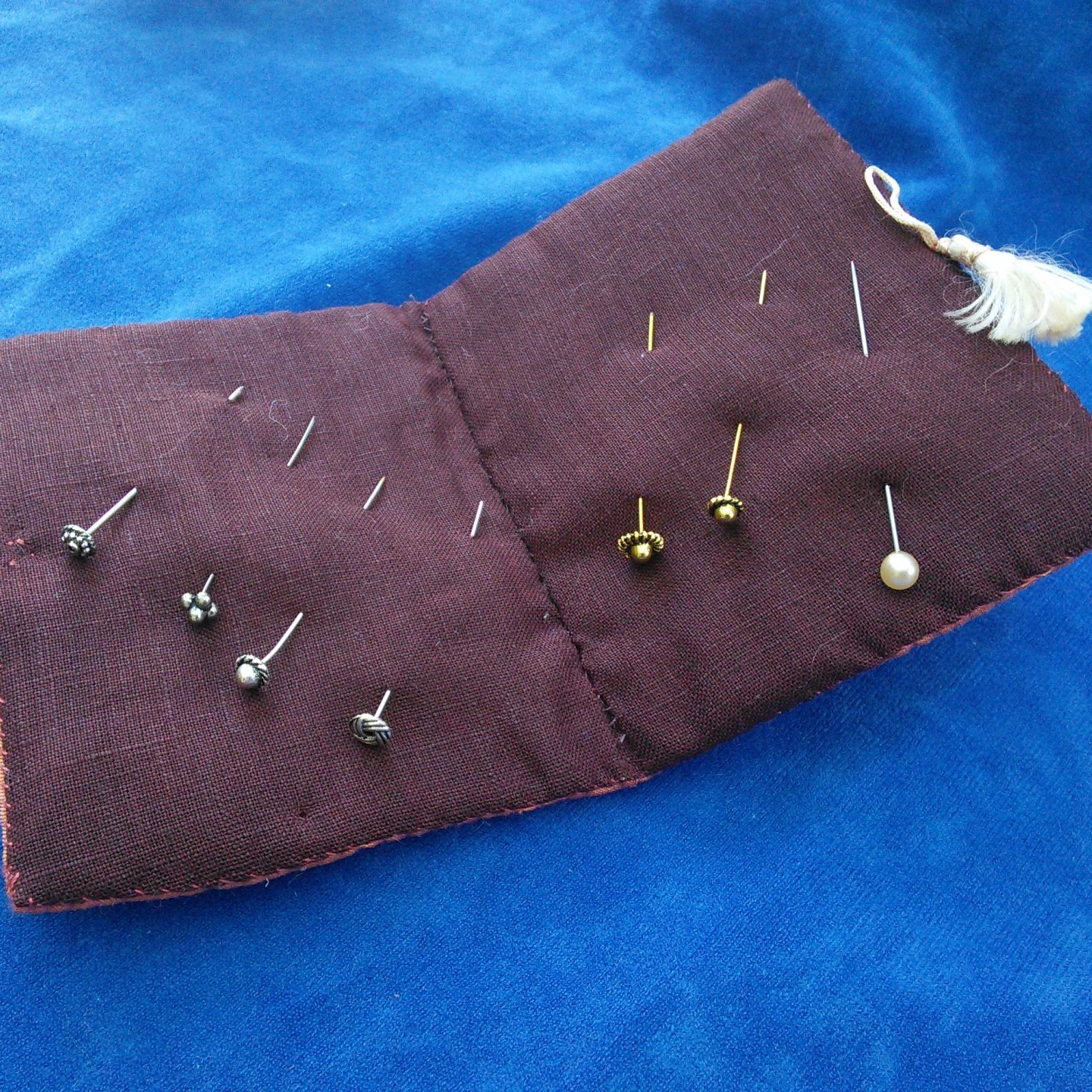

Women's Clothing: Accessories
Girdle Belt
13th - 15th century
People get them frequently confused due to their name, girdles are not the corset type garments we think of today. They are long fabric belts, when belts are refed to in historical information it is in reference to leather type belts only.
Common in the 14th century girdles appear on lots of effigy's, statues and paintings around this time. Girdles were used to show off the hip as this was fashionable, it showed you where good breading stock. Often pictures even showed the subjects changing their posture to have the stomach pushed forward. Girdles were tied in a knot at the front, with the excess handing down.
Belts were made of leather, with decorative ends. Belts needed weighted ends so that they would not flap around, and this gave another reason for have them overly decorated ends.
Stockings & Garters
13th - 15th century
Knitted socks did not come into use until Henry VIII, even then most of his hose were made in wool fabric and held up by garters.
Both women's and men's foot coverings were made in the same way as the men's hose. The men quite often had them built into their hose.
Garters ranged from simple fabric strips to embordered ribbons and braids. These were tied around the thigh or calf to hold up your stockings.
Purses & Gloves
13th-15th century
Leather ones may have been used by the lower classes but for most women they would have been fabric and attached to the girdle or carried by a maid.
Men's tended to be larger then ladies and leather. Both could have ornate shapes, designs and embellishments to show off your wealth.
Leather gloves were worn for hawking and riding. These became elaborate in the later 14th century and into the 15th century for the upper class, made in metals with inset stones.
Hat pins & Holders
13th - 19th century
Ladies pins are the most commonly discarded item found in the River Thames.
Hatpins go back well before the 13th Century and way into the 19th Century. Reenactors know all to well how easily pins and get lost or be found stuck in something they shouldn't be. As such it has always been a good idea to make sure you have your pin holder with spare pins ready in near by.
These pins were used for lots of things from keeping your head wear (Veils and hats) in place to holding the front panel of your dress in place.
Hand Mirrors
13th - 15th century
Hand mirrors were also popular, though not the kind we think of today. Most hand mirrors of the time would have been polished metal.
It was not till the 1500s that mercury was added to the back of the glass to give the mirror like quality's we think of today. Venice was at the centre of this craft with they're world renowned glass makers. During the 14th and 15th century's the church still saw the admiration of ones self in a mirror as vanity, but even so mirrors were still warn around girdle belts and carried in purses.
Rings & Other Jewellery
13th-16th century
Jewellery such as brooches and rings were considered the bigger the better in the 13th - 16th Century. Garments were also crusted with stones and embroidery. Women did not how ever wear necklaces or earrings, until late 15th century. The reason is unclear as to why they stopped during this time.












